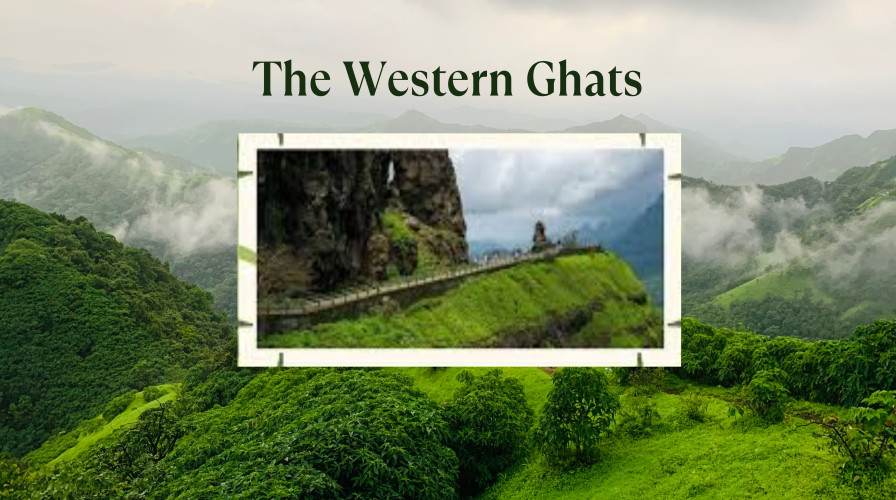Western Ghats: Unveiling Nature's Treasure Trove
The Western Ghats, a UNESCO World Heritage site and one of the world's eight "hottest hotspots" of biological diversity, is a mesmerizing tapestry of lush forests, pristine rivers, and unique ecosystems. Stretching along the western coast of India for about 1,600 kilometers, this mountain range is not just a natural wonder but also a crucial hub of biodiversity that supports countless species, many of which are found nowhere else on Earth.
A Biodiversity Hotspot
The Western Ghats is home to an astounding array of flora and fauna, making it one of the most biodiverse regions on the planet. Spanning six states—Gujarat, Maharashtra, Goa, Karnataka, Kerala, and Tamil Nadu—the Ghats encompass diverse habitats ranging from tropical rainforests to grasslands and montane forests.
Flora: The Ghats boast over 7,400 species of flowering plants, including a vast variety of endemic species. The region's forests are adorned with towering trees, exotic orchids, and medicinal plants that have been used for centuries in traditional medicine.
Fauna: The Western Ghats supports an incredible diversity of wildlife, with numerous species of mammals, birds, reptiles, amphibians, and insects. Iconic species such as the Malabar giant squirrel, Nilgiri tahr, and Lion-tailed macaque find refuge in these verdant forests.
Unique Ecosystems and Landscapes
The Ghats are characterized by a mosaic of unique ecosystems, each with its own distinct biodiversity:
Montane Forests: At higher altitudes, montane forests shroud the peaks of the Ghats, harboring specialized flora and fauna adapted to cooler climates.
Shola Forests: Shola forests, found in the valleys between montane grasslands, are characterized by stunted trees and endemic species. They play a vital role in regulating water flow and maintaining local biodiversity.
Grasslands: The Ghats are dotted with expansive grasslands, which are important habitats for grazing animals and endemic plant species.
Conservation Challenges and Efforts
Despite its ecological significance, the Western Ghats face numerous threats, including deforestation, habitat fragmentation, invasive species, and climate change. Human activities such as agriculture, infrastructure development, and mining pose significant challenges to the region's biodiversity.
Conservation efforts in the Western Ghats are crucial to safeguarding its rich biodiversity:
Protected Areas: The Ghats are home to numerous national parks, wildlife sanctuaries, and reserve forests that provide legal protection to its flora and fauna.
Community Conservation: Engaging local communities in conservation initiatives, promoting sustainable livelihoods, and raising awareness about the importance of biodiversity are essential strategies for long-term conservation success.
Research and Monitoring: Continuous research, scientific monitoring, and data-driven conservation strategies help inform policies and actions aimed at preserving the Ghats' biodiversity.
Ecotourism and Education
Ecotourism in the Western Ghats offers visitors a chance to experience its natural beauty while contributing to local conservation efforts. Activities such as nature trails, birdwatching, and wildlife safaris not only generate revenue for local communities but also foster appreciation for biodiversity conservation.
Education plays a pivotal role in raising awareness about the Western Ghats' ecological importance. Environmental education programs, interpretive centres, and workshops help in still a sense of stewardship among visitors and local residents alike.
Preserving a Global Treasure
The Western Ghats are not just a national asset but a global treasure that requires collective efforts to conserve for future generations. Protecting this biodiversity hotspot involves collaboration between governments, conservation organizations, local communities, and individuals committed to sustainable development and environmental stewardship.
As we marvel at the beauty and diversity of the Western Ghats, let us also recognize our responsibility to safeguard its ecosystems and species. By valuing and preserving this natural heritage, we ensure that the Western Ghats continue to inspire, enrich, and sustain life on Earth for years to come.










